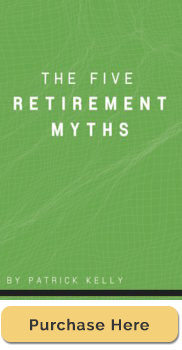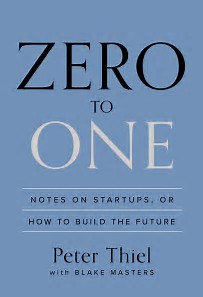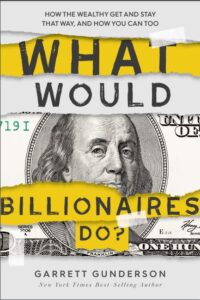
Review of Patrick Kelly’s The Five Retirement Myths
Kelly starts off by stating their is a lot of information in the retirement marketplace and it’s hard to know who to listen to.
Today’s retirement space is noisy. Very noisy. Voices shouting from every direction, all of them saying the same thing, “Listen to me! I’ve got the answer!”…While some of these messages are valuable — able to lead you to a safe, happy, and prosperous retirement — others are just noise.
Instead of suggesting that he has the key to your success with one specific strategy, Kelly wants to clear the playing field a bit by telling the reader what messages to AVOID.
Myth #1 – Buy and Hold Always Wins
Th myth that buy and hold works would be wonderful if it were actually true. If we could just buy and forget, buy and hold, invest and rest, life would be so much more simple. The reality is more complicated and buy and hold actually winds up being “buy and hope”. Kelly provides solid evidence that buy and hold is a myth.
His first example is the two large financial companies that went bust in the 2008 crisis — Bear Stearns and Lehman Brothers. The two companies had been around for 85 (Bear Stearns) and 158 years (Lehman Brothers). And the two had a market cap of almost $86 billion if you combined the two. These two companies were powerhouses in Wall Street and investors that wanted to bet on a sure thing didn’t have to look anywhere else — or so they thought.
During the 2008 banking crisis, Bear Stearns and Lehman Brothers were wiped out in just a few days. Their stock prices, which had seen a high of $172 or $86 a share, were both worth nothing. Their investors lost everything.
One of the things I like about Kelly is that he typically writes in such a way that seems to predict your counter arguments. He does just that in this chapter when he states: “And they’re not alone. There are hundreds of examples. And most have nothing to do with the worldwide financial crisis, but rather aggressive competition, newer technology, or even their own missteps.”
Kelly mentions a few companies that have gone bust, and I’m sure you can come up with your own. Kodak, Blockbuster Video, Pontiac, Circuit City, Enron, Washington Mutual and more.
What’s the point? Kelly is trying to show that there is no guarantee that a company will last forever, that it will never hit hard times or go under. Apple seems like a sure bet today, but we don’t know the future, so you have to evaluate frequently if you want to play the game.
What if I Just Buy and Hold Indexed Funds or ETF’s?
Kelly points out that indexes do not always go up, even over the long haul. He references the Japanese Nikkei 225 index which saw a high in 1989 of 38,915. The Nikkei 225 is similar to the S&P 500 of the American market. It’s an index of 225 large companies in the Japanese market.
If you bought the Nikkei 225 in 1989 and held it for 20 years, until 2009, you would have seen a staggering loss off 73%. And that doesn’t include any trading costs or fees.
The crazy thing about all this, as Kelly points out, is that the Nikkei had some really good years during that time. It’s not like all the years were bad.
Kelly just wants to let a couple points sink in:
- Investing in individual stocks is definitely not a sure bet for the long haul (Bear Stearns, Lehman Brothers)
- Investing in major market indexes is not a guarantee against loss over the long run
Myth #2 – You Can’t Make Big Returns Without Taking Big Risks
Kelly wants to address a common belief by presenting his case for this myth. Many people believe that you only have two options with investments — you can either be ultra-cautious by putting you money into a CD and getting a ridiculously poor return, or you need to invest in the equities market and risk your money with the Wall Street sharks.
The reality is that getting a solid return is not about big risk, according to Kelly. Instead, you just have to eliminate your losses. Kelly refers back to the Nikkei 225 index to make his point. During the same 20 year time span — 1989 to 2009 — the index had 11 years of losses and 9 years of gains. But some of the gains were quite impressive. Four years in particular had a return of 19%, 24%, 36%, and 40%.
As was already mentioned, the index lost 73% over the span of those 20 years. So the buy and hold strategy would not have paid off. However, what if you could eliminate the years in which the index lost money? How would that have turned out for you? Kelly provides the answer.
First he points out that $1,000 invested in 1989 would have resulted in you account dropping to $271 by 2009. And again, he isn’t factoring in trading costs or fees. But what if the investor could eliminate the down years? Kelly shows that the account would have increased to $3,838, instead of dropping to $271.
That’s a dramatic difference just by eliminating the down years. But of course, who can get all the good without any of the bad?
NOTE: Kelly doesn’t actually mention it in the book, but it is possible to get just the good without the down years, but the good years are capped. The product is an IUL insurance policy. This is really Kelly’s bread and butter, but in this book he doesn’t mention it at all — he just sets the stage.
Kelly shows that you don’t have to have huge returns in the good years to make a solid long term return. All you need is to eliminate the down years. We rank the top universal life insurance companies here.
To prove his point, he caps the positive years at just 7%, In the previous example, if you only had 9 years that gained and the cap was at 7%, the original investment of $1,000 would result in your account being $1,663. This value is actually 514% more that the index actually produced during that 20 year span. This is the power of eliminating the down years.
Myth #3 – Average Returns Tell An Accurate Story
Kelly isn’t a fan of the fact that most financial consultants preach the average returns of the stocks and indexes they are peddling. Financial entertainers will say something like “Believe it or not, the S&P 500 has returned an average of 12% over the last 20 years, even if you factor in the crisis years.” Kelly has some choice words for people that suggest this sort of thing; “Hogwash! The statement may be factually true, but in reality, it’s misleading — worthless.”
His point is that there is a difference between the actual return of an investment and the average return. For example, let’s say you have a $1,000 invested in year one. The first year you take a 50% loss and the second year you get a 50% gain. It seems simple that you would have a 0% average return, right? Correct. The average return is 0%. But how much money do you have in your account? You don’t have $1,000. No, instead you have $750.
Actual Return vs. Average Return
How does it work? Let’s look a little closer.
After year one, the 50% loss resulted in the balance being just $500 (50% of the original $1,000 investment). After year two, that $500 gained 50%. But what is 50% of $500? You got it — $250. So add that $250 to the $500 and you get $750. So an average return of 0% in this case, resulted in a -25% actual return loss of the original investment.
Kelly goes on to show that average returns NEVER equal actual returns when negative years are included. This is the reason why so many people look at their 401k, or their IRA and wonder why it doesn’t grow as fast as they would like.
Myth #4 – You Can Manage Your Own Portfolio
Kelly believes that people do dumb things when it comes to their finances. And even though we live in a world in which information is readily available for just about everything (car repair, home improvement, etc.), there are some things we just don’t do well on our own. His reasoning: Human nature.
According to Kelly, our “fight or flight” nature also has an equivalent “greed or fear” character trait. This can be seen with a typical investor in the market. They jump into the ring, fight it out and start winning some battles and getting some gains. Only to stay in to long and see it drop a bit, and then because of their greed they fail to take the gains until it’s dropped too much. Alternatively, they will sell a rising stock way to soon, only to watch it go up and up.
Horse Whisperer Gone Wrong
Kelly compares it to a rancher of wild horses. The rancher has an open corral into which he places water and feed for the roaming wild horses. After a few days a wild horse wanders into his corral. He’s on top of the world, his strategy is working. He leaves the gate open and a couple days later there are two in there. This continues until he has 9 horses. Does he close the corral gate? No. He wants more. He’s greedy. Even though the 9 horses is a spectacular catch, he still wants more.
Then one day a horse leaves the corral. Now he only has 8 horses. The rancher is furious with himself for not closing the corral gate and locking the horses in. But he thinks that the horse will likely return and then he’ll shut the gate. That doesn’t happen. Instead another horse leaves and now there are only 7. Once again the rancher is upset, wishing he had locked in his 8 horses. Now he vows to himself that he’ll shut the gate as soon as 1 of the 2 horses returns and be content.
This same mentality continues until he has 1 horse left. And even then he doesn’t close the gate because he has already lost so much he might as well risk what’s left. Ultimately his greed and fear have caused him to lose it all.
Kelly says this investor mentality is simply human nature. As a result, Kelly recommends having someone else manage the financial decisions so your own human nature doesn’t get in the way. Someone that is more capable of being objective about your money and investments. As always, we at I&E think that talking with a financial representative can be a huge help. And we happen to agree with Kelly that eliminating negative years is the key to a happy path to retirement.
Myth #5 – If Something is Really That Good, Everyone Would Be Doing It
Kelly reference the cars that are on the market now that have sensors for auto-driving and crash prevention. These cars are clearly safer and better for most individuals. And yet people buying new cars don’t always buy these cars. Why? For a variety of reasons, some being cost. But the point Kelly is trying to make is that it takes a long time for new ideas to become mainstream.
Kelly doesn’t mention it in his book, but I would just add that when the car was invented there were plenty of horse owners that said it was a fad and that it wouldn’t last. There were a number of reasons given at the time – they were loud and complicated. People were bonded with horses and loved them. But ultimately the car took the world by storm. It was clearly the better option for transportation, but it took time for people to see that.
This same thing is true today with financial products. People may not be familiar with something, or they may not hear about it from their friends at work, but it doesn’t mean it isn’t the best option.
I mentioned this earlier, but I’ll say it again, Kelly loves the IUL. He is a big fan and this book is a sort of pre-cursor to presenting IUL as a viable retirement option. I would just like to add that the same arguments can be made with whole life insurance as an investment vehicle. Locking in gains each year and never having a losing year, it’s a big part of what whole life insurance is all about – consistent returns without a loss.
Final Thoughts
The stock market should not be the end all solution for retirement for anyone. Very few people gain wealth by investing in a “buy and hope”
strategy. Those who have risen to fame from the stock market, the Warren Buffets of the world, have done so by acquiring the companies, not the stock. Consider other potential avenues for wealth building, including income producing assets such as real estate.
Lastly, if you’ve never picked up a book by Patrick Kelly and you like reading about finance, do yourself a favor and pick one up. My recommendation would actually be Tax-Free Retirement or The Retirement Miracle – both are excellent reads. He has a few others that are worth reading, but they’re typically much shorter and are hardly worth the price unless you’re reading them to review.





